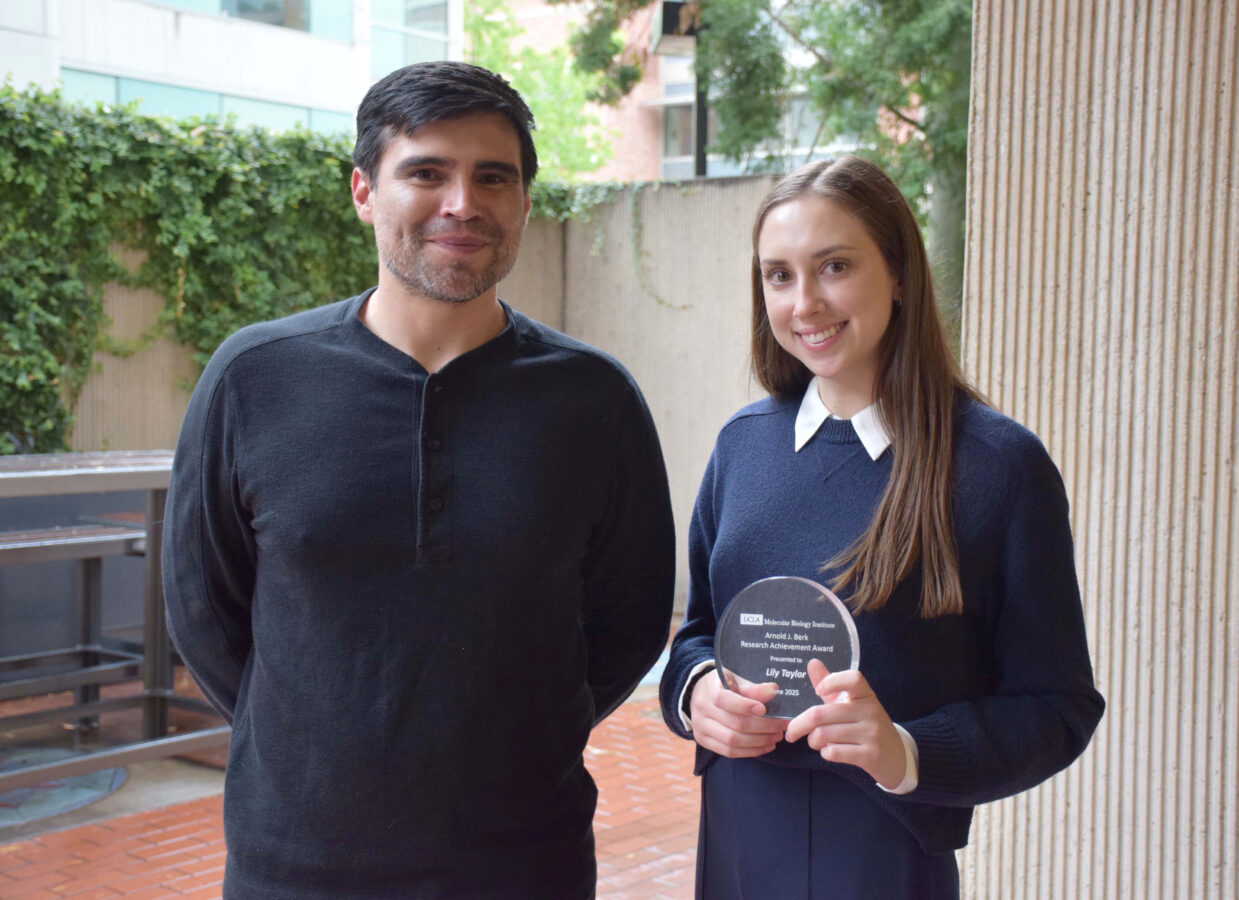For years, graduate student Lily Taylor and her advisor, Professor Jose Rodriguez, have been working on something big: a novel technique that would finally allow scientists to look closely at some of the most “chaotic” viruses in the world. Now, in Taylor’s first published paper as first author, they have done it.
While most viruses form symmetrical shells around their genetic material, enveloped viruses (often called “chaotic” due to their disordered structure) have a flexible membrane coating with proteins scattered across it in unpredictable ways. These surface proteins are what allows a virus to attach to and invade human cells. But because they are loosely arranged and difficult to isolate, scientists have typically removed and analyzed them in artificial environments, limiting how accurately they can be understood.
“Without the university’s leadership in health research, which gives us access to amazing tools, technology, and collaborators, we never could have achieved these goals.”
– Lily Taylor
This structural chaos isn’t just a quirk, it’s a major obstacle to developing effective treatments. “Some of the deadliest viruses in the world, like those that cause hemorrhagic fevers, are not only dangerous but structurally complex, making them extremely difficult to study,” said Rodriguez. “Our technique, which Lily spearheaded, finally gives us a way to see how their surface proteins behave in real life, which is key to stopping them.”
The team, which recently published their findings in Cell Reports, achieved this by analyzing existing electron microscope images of these viruses using a novel imaging platform they developed. The platform makes sense of the virus’s disorganized surface by aligning and averaging the signals from many copies of the same virus, producing one representative image of the proteins in their native state. For the first time, researchers now have a reliable picture of the structure of these difficult-to-study molecules.
“I was inspired by the crucial need to see the Junin virus’ surface machinery in its natural state so that we can develop effective therapeutics,” said Taylor. “Junin is a virus that causes a highly dangerous type of hemorrhagic fever for which we have no reliable treatment. Seeing the viral proteins in their natural state for the first time was one of the most exciting moments of my graduate research career.”
But the work goes even further. In one striking example, the researchers imaged a molecule currently in development as a drug to treat hemorrhagic fever. Though the molecule had shown promise, it wasn’t structurally clear how or why it worked. The new images provided by the UCLA team revealed precisely how the molecule binds to a viral protein—effectively “locking” it and preventing it from interacting with human cells.
“The structure of the Junin glycoprotein that the UCLA team helped identify is critical for obtaining new, rationally designed antivirals against deadly Argentine hemorrhagic fevers. This insight can now be used to refine and improve the therapies we are developing,” said Professor Gustavo Helguera, co-author on the paper and Head of the Laboratory of Pharmaceutical Biotechnology at the Institute of Experimental Biology and Medicine in Buenos Aires, Argentina.
In other words, the technology has the immediate potential to directly impact how new treatments are discovered and designed.
Taylor is quick to highlight the cooperation from across UCLA that helped lead to these results. “This work was not just our own, but carried out in collaboration with several labs across campus,” she said. “Without the university’s leadership in health research, which gives us access to amazing tools, technology, and collaborators, we never could have achieved these goals.”
Now that the method has been proven, the team plans to use it to search for new drug-like molecules that can bind to viral proteins and block infection. By applying their approach to test how different compounds interact with these proteins, they hope to help uncover better treatments for more of the world’s most dangerous viruses.
 Professor Jose Rodriguez and graduate student Lily Taylor, who was first author on the groundbreaking work.
Professor Jose Rodriguez and graduate student Lily Taylor, who was first author on the groundbreaking work.